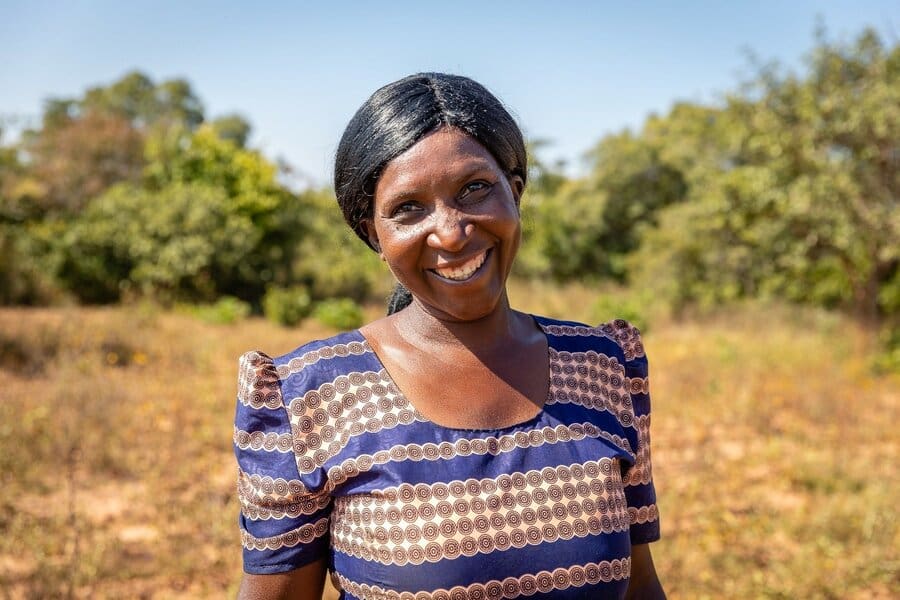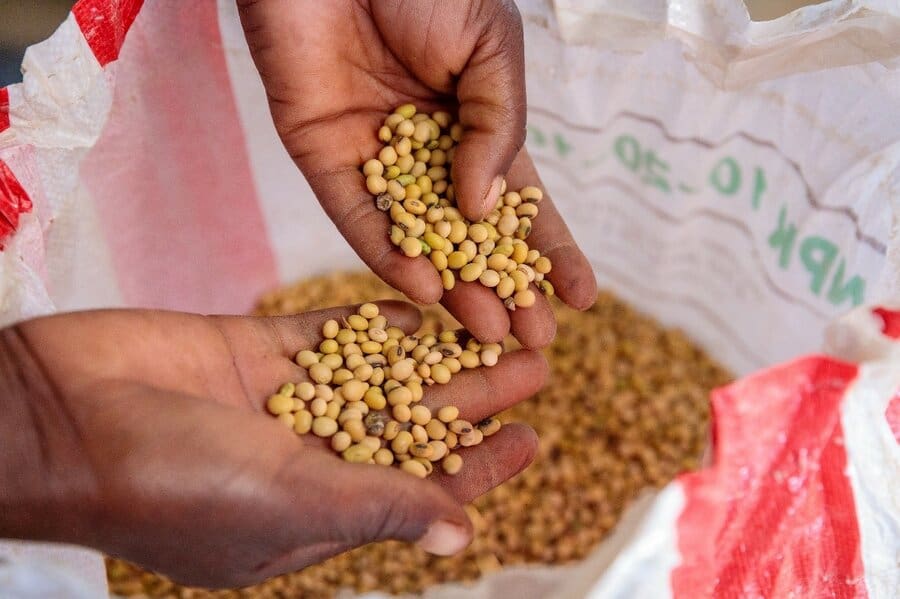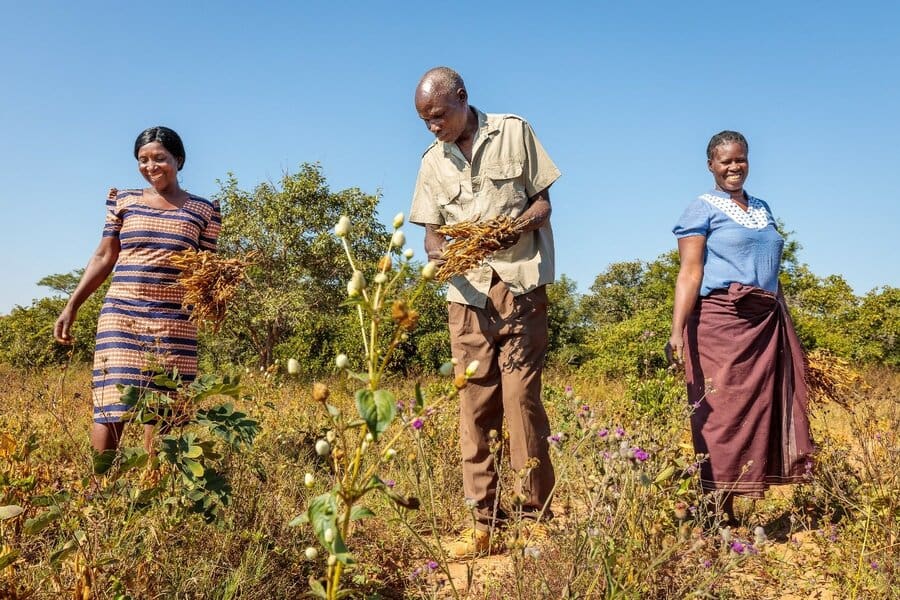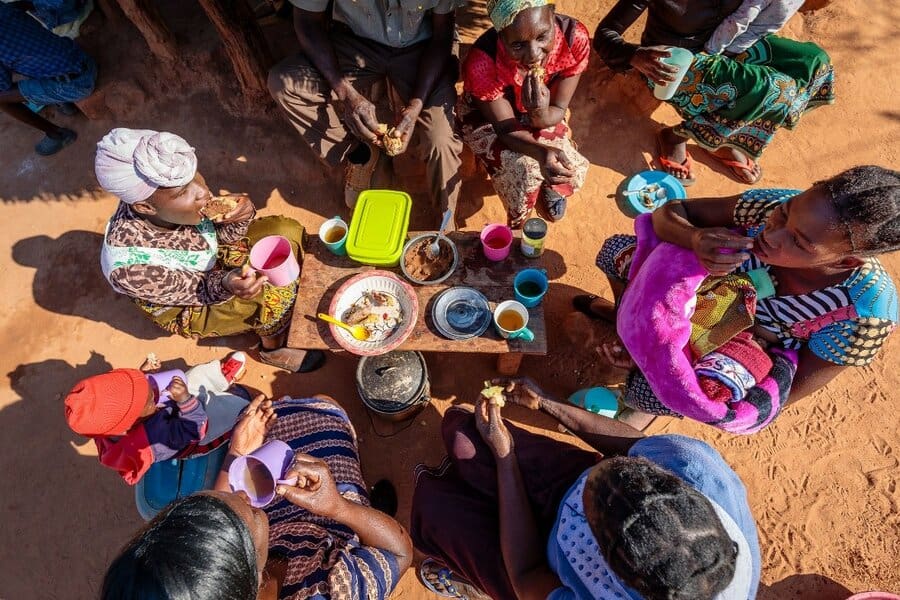Climate Smarts: “We Make Our Own Food and Can Afford to Buy What We Do Not Grow”

The United Nations World Food Programme (WFP) is empowering farmers in Zambia to increase and strengthen their crop yields.
Mainner, her husband and their four children live in the town of Pemba. Despite the ever-present risk of drought and floods, Mainner has progressed from just getting by to running her own successful business providing nutritious crops for local food producers.

Zambia’s small-scale farmers like Mainner produce 90 percent of the country’s food supply, but are highly dependent on rainfall.
“I used to struggle to feed my family or dress my children, but I changed my life for the better when I diversified my farm and started selling in bulk,” says Mainer, who like thousands of farmers in Zambia’s Southern Province, is supported by the U.N. World Food Programme.
“This year, I’m hoping to aggregate 700 metric tons of cowpeas, corn, soybeans and groundnuts,” she added.

The slightest change in air temperature or water levels can devastate crops like corn. This in turn can trigger high food prices which pushes food out of reach for families in urban areas. Cowpeas, pictured above, are among the drought-resistant crops Mainner is now able to grow.
Mainner began working with the U.N. World Food Programme in 2017 to increase and diversify her crop yields. Before then, she only grew corn – a crop highly susceptible to drought and flooding. She participated in conservation agriculture training to learn climate-smart practices for her crops. With organic fertilizer and new soil techniques, Mainner was able to grow a variety of drought-tolerant crops.
“This improved my yields, income from selling and nutrition for my family,” she says.

Groundnut day: Mainner harvests with her husband and sister. To improve healthy diets, Mainner advocates for farmers to start growing nutritious crops and processing healthy food.
Mainner stores all her crops in airtight bags — a low-cost, post-harvest technique that eliminates the risk of pests by suffocating any insects and preventing others from entering. This helps to reduce food losses and allows Mainner to sell her produce when market prices are higher.
“The shed and airtight bags have really helped me. Before, I stored crops in my house and could only aggregate small amounts,” she says. “Now, I buy from almost 400 farmers. My dream is to start selling fertilizer and seeds in this shed as well. It will help farmers access what they need without having to travel long distances into town.”
Mainner is also empowered by access to climate information. The U.N. World Food Programme has installed 165 rain gauges in her area. Farmers like Mainner are trained to measure, record and share rainfall data to helps them make the right decision on what crops to plant and when.
“If I’m told that there won’t be much rain in a season, I go for short-maturing varieties,” she says. “I share all this information with my fellow farmers. If they are affected by climate shocks, I am too. I lose business if I can’t aggregate their crops.”

Mainner’s family take groundnut butter and sweet potato for breakfast.
Mainner then decided to start bulk growing and selling her crops through the U.N. World Food Programme’s Virtual Farmers Market mobile app, which connects farmers with potential buyers, helping them get more competitive prices.
“I started using some of my savings and income to buy and bulk crops. Over the past two years, I’ve managed to sell over 500 metric tons of cowpeas, soybeans, orange and white corn, and groundnuts,” she says.
“We no longer have a problem with nutrition. We make our own food and can afford to buy what we do not grow,” she says.
This story originally appeared on WFP’s Stories on June 9, 2021 and was written by Sophie Smeulders. To learn more about our food waste and loss programs, click here.




